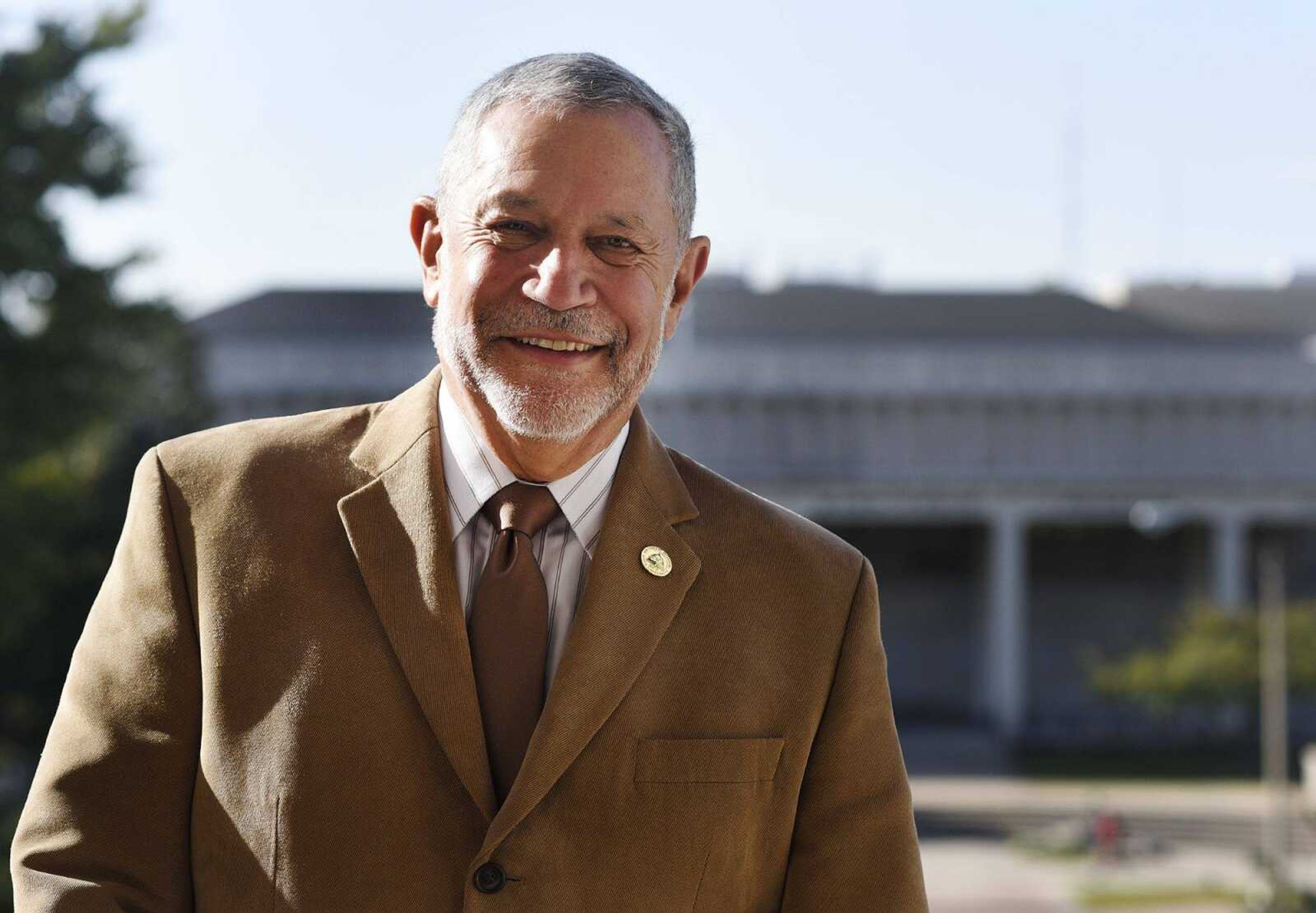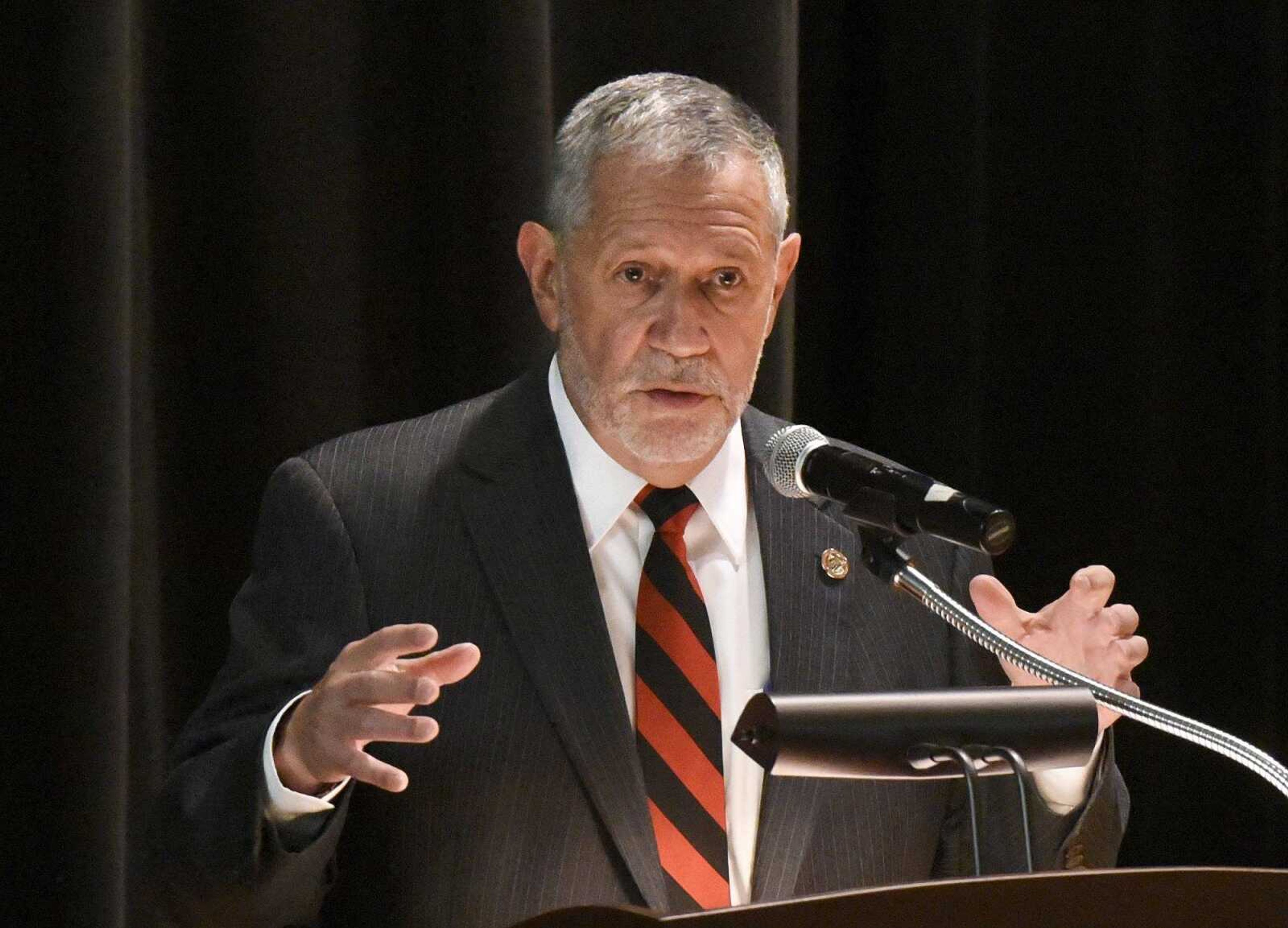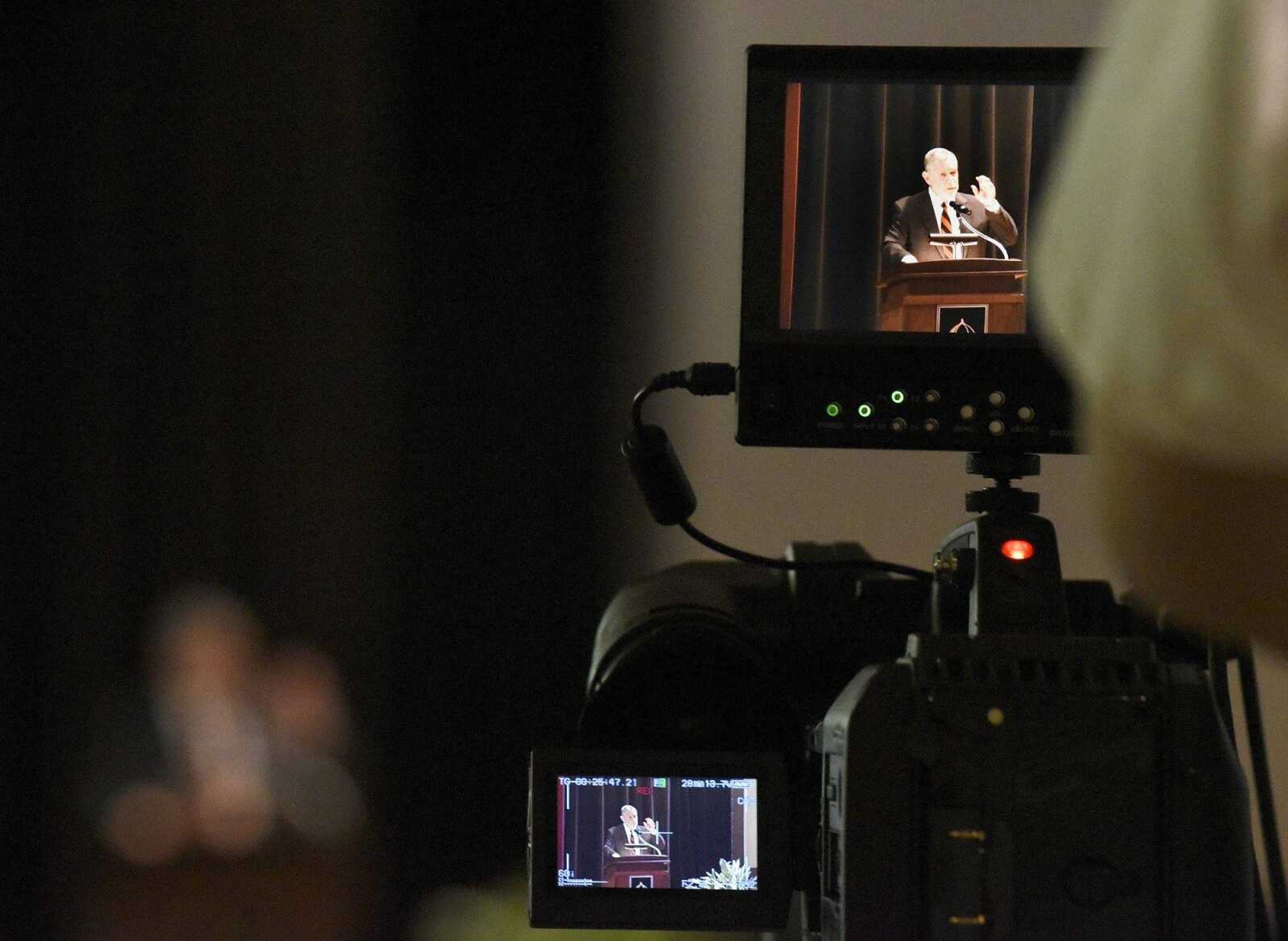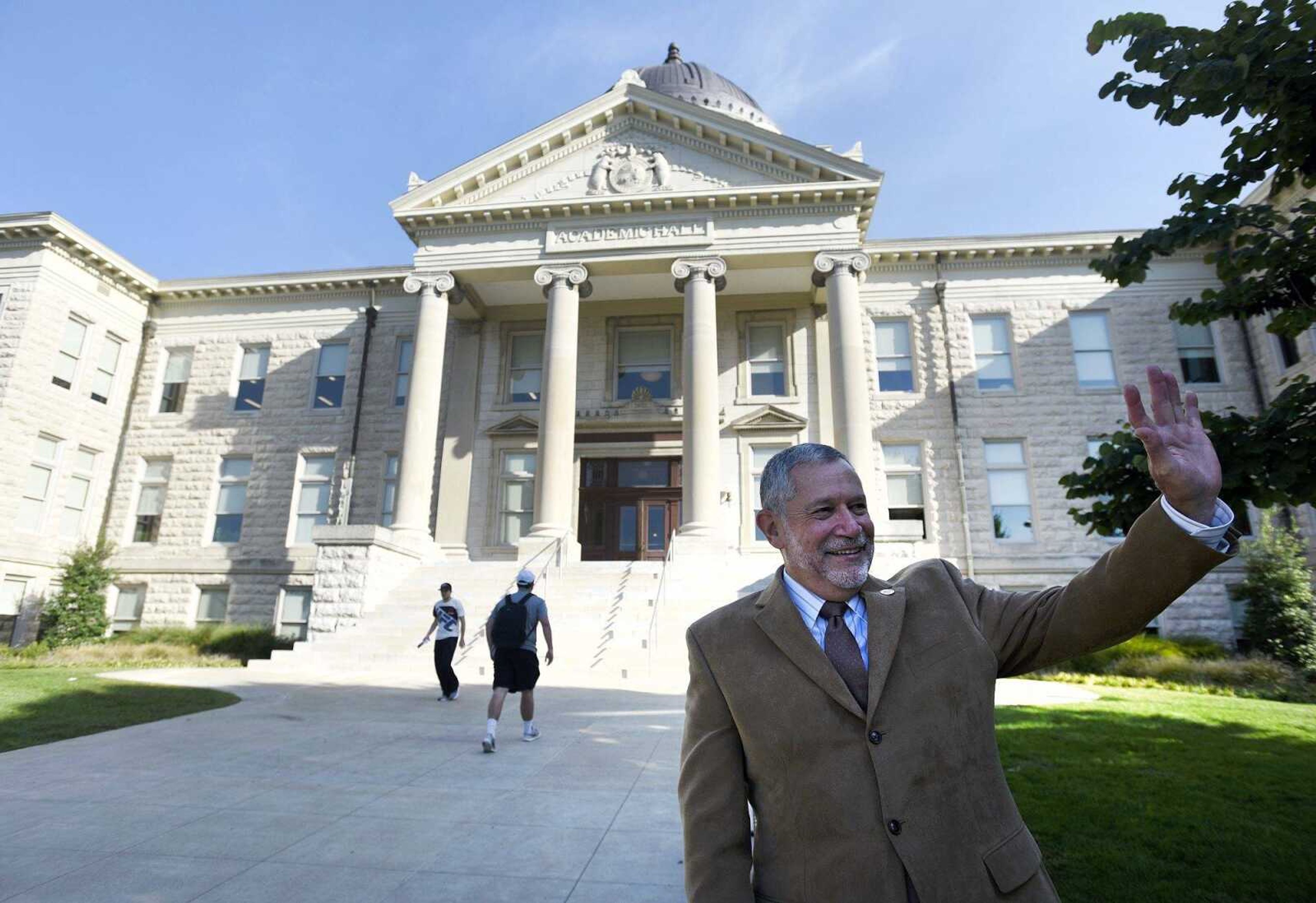Vargas enters sophomore year as president; grad rate, diversity among top issues
Now with a year under his belt at the helm of Southeast Missouri State University, Carlos Vargas-Aburto has a clearer picture of the campus and the culture of Cape Girardeau. He spent much of the first year making good first impressions with people from all over the community, from high-profile leaders to students who play soccer on the weekends...
Now with a year under his belt at the helm of Southeast Missouri State University, Carlos Vargas-Aburto has a clearer picture of the campus and the culture of Cape Girardeau.
He spent much of the first year making good first impressions with people from all over the community, from high-profile leaders to students who play soccer on the weekends.
Now that Vargas has a more focused picture of what needs to transpire, he can go about the business of setting priorities and executing a vision. Among the top priorities in his view is increasing the graduation rate at Southeast.
In a wide-ranging interview Friday in his Academic Hall office, Vargas discussed the graduation rate and a number of other issues — from diversity to the feasibility of Southeast becoming a tobacco-free campus.
Vargas acknowledged Southeast’s graduation rate is low. Only 48.8 percent of students graduate within six years, according to school officials.

According to 2013 graduation rates published online in the Chronicle of Higher Education, 55.2 percent of students at Missouri’s 13 public colleges graduated within six years.
Vargas said many factors contribute to the low rate.
“Many of them have to do with cost of education; many of them have to do with personal situations,” Vargas said, adding some students take awhile to decide on a field of study. “Sometimes it takes longer because of remedial courses that they have to take.”
Southeast is looking to identify what factors the university can control to allow more students to graduate within six years, he said.
Vargas said the university will look at everything from faculty advising to tutoring to see whether changes can be made to improve the graduation rate.

“We need to work more with at-risk students,” he said.
Student retention also affects graduate rates, the school president said.
Southeast experienced a 74 percent freshman-to-sophomore retention rate this fall, up from 72.9 percent a year ago,
university records show. The university continues to strive to reach its retention goal of 80 percent, outlined in its strategic plan.
Vargas said some students leave Southeast after their freshman year because of financial reasons or a feeling they cannot keep up with the academic requirements.

He said it is important for students to develop relationships with other students, staff and faculty inside and outside the classroom.
Different challenges face incoming freshmen and transfer, graduate and international students, he said.
“Oftentimes, students feel out of place. They feel they don’t belong. That is something I feel we can do something about,” Vargas said.
Vargas said the university needs to encourage students and “help them become engaged in the community.”
College life initially can be challenging to freshmen. High-school students come from a very structured environment, he said.
“Everybody tells them what to do. When they get here, all of a sudden all of that structure disappears,” he said.
Vargas said students have to make choices.
“Do I stay in bed a little bit longer or do I go to class? Do I finish my paper or do I go to the party?” Vargas said.
The university president said he encourages students to devote time to reflect on “how they can integrate what they learn in every course in such a way that they can become a problem solver.”
On the issue of diversity, Vargas said he is committed to implementing recommendations finalized in December by a campus task force.
Southeast hired a diversity consulting firm, Inclusion Inc. of Minneapolis, to work with faculty, staff and student leaders and hold diversity workshops. The consultant also will help craft a statement on diversity and inclusion, the president said.
The yearlong effort will cost the university $87,900. Vargas said “it is a large amount of money,” but the consulting work will benefit the university and its students.
“It is an effort to make sure that individuals like me, for example, are not almost inadvertently doing things that might be interpreted wrong by different groups,” he said.
Vargas added Southeast must “communicate better how we appreciate them, how we respect them, how we embrace individuals,”
The university president said it is essential to recruit and retain minority faculty.
“I have always believed it is important that students have an opportunity to see someone that looks like them, acts like them,” he said.
A diverse campus community is important for students’ education, Vargas said. Southeast must develop graduates who are able to operate in a global environment, he said.
“If nothing else, it is a business decision. If a student is not able or comfortable to work and interact and be productive in an environment that is multicultural that student is going to be at a disadvantage,” he said.
Southeast has 1,037 black students compared to 9,100 white students. Hispanic enrollment remains low, at 209 students.
Vargas said the university has had success recruiting black students throughout the region, including the St. Louis area.
“I don’t think we have done the same with the Hispanic community,” he said.
But Vargas said efforts are being made to reach out to Hispanics. Southeast has joined the Hispanic Chamber of Commerce in St. Louis.
The university also is looking at the possibility of advertising on a Hispanic radio station in an effort to reach parents of potential students.
“In many cases, the parents don’t have the ability to communicate in English,” he said.
Vargas said he and others at Southeast also have made trips to Latin America in an effort to develop faculty and student exchanges. Vargas said such efforts could bring more students to Southeast from such places as Panama and Costa Rica. Nearly 1,000 international students are enrolled at Southeast this fall.
When it comes to hiring faculty, Vargas said it is important to hire the best-qualified person. To do so, the university needs “to offer salary consistent with the market.”
Vargas said Southeast is exploring the feasibility of becoming a tobacco-free campus.
“More and more universities are looking at going tobacco free. Here in Missouri, we are one of the few that is not smoke-free,” he said.
In a statewide survey of students at 21 colleges and universities in Missouri in 2015, 80 percent voiced support for a smoke-free campus. Among Southeast students who took that survey, 72 percent indicated the same preference, according to information contained in Southeast’s strategic plan.
The Student Government Association last week began seeking comment from students on the issue.
Vargas said there is no timetable for deciding the issue.
“There is no rush,” he said, adding he hopes faculty, staff and students can reach a consensus.
Southeast already restricts smoking to 23 designated areas on campus.
“There is a significant amount of evidence that it hurts your health,” he said of smoking. “We at Southeast are trying to be an institution that supports health and wellness.”
mbliss@semissourian.com
(573) 388-3641
Pertinent address:
Academic Hall, One University Plaza, Cape Girardeau, Mo.
Connect with the Southeast Missourian Newsroom:
For corrections to this story or other insights for the editor, click here. To submit a letter to the editor, click here. To learn about the Southeast Missourian’s AI Policy, click here.









